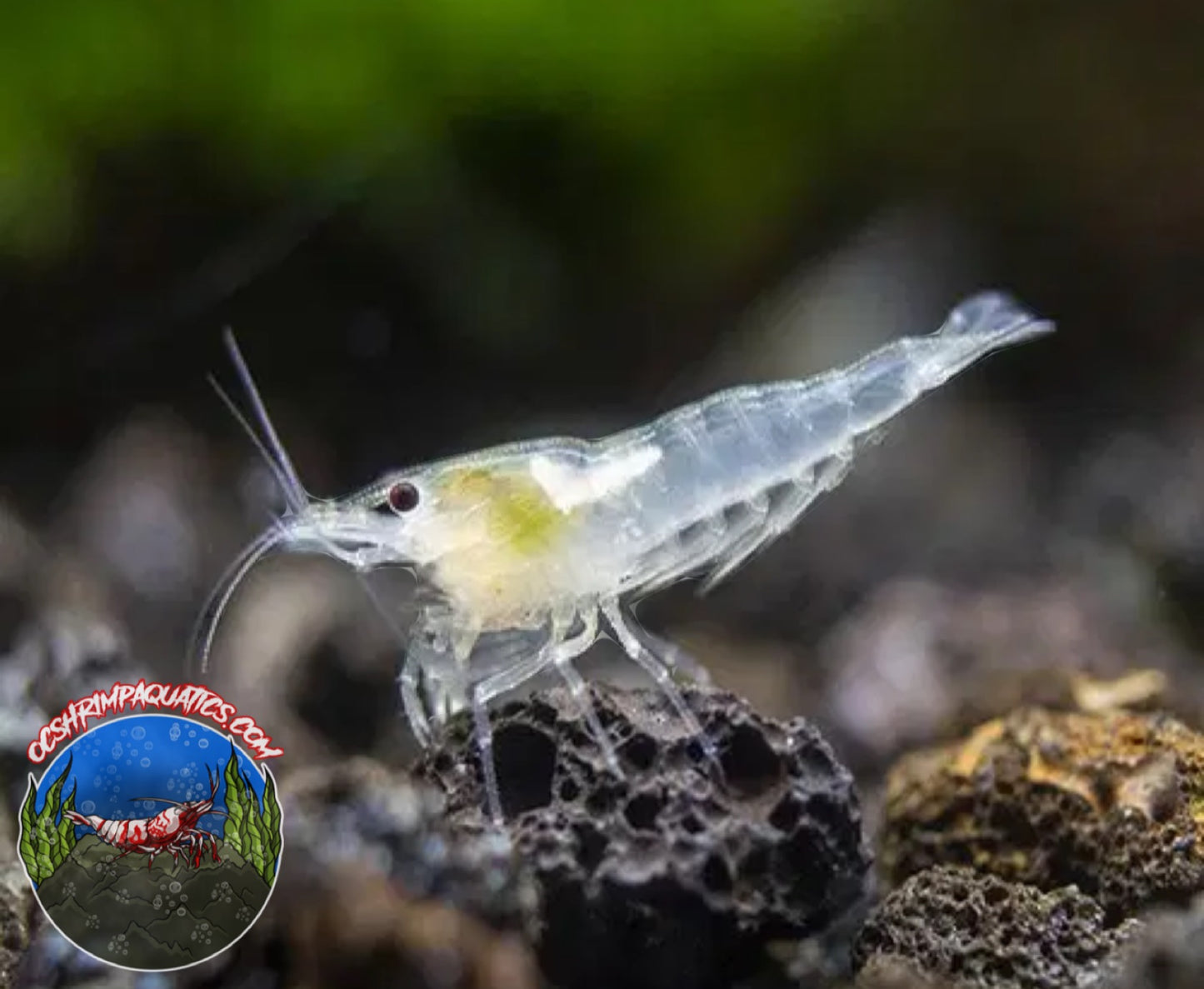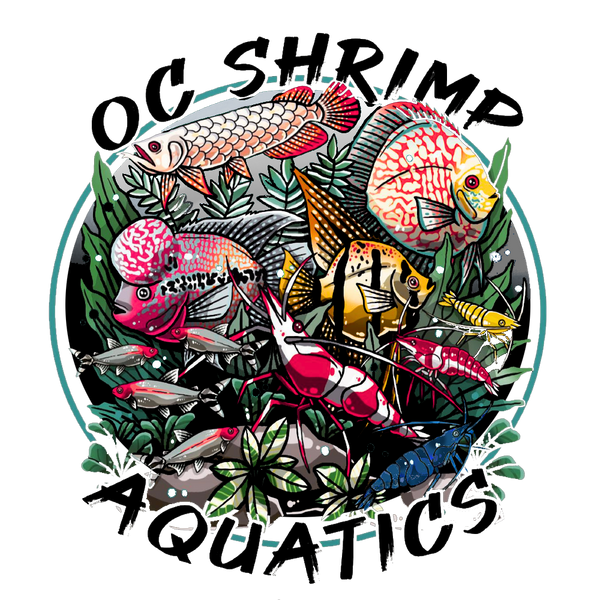1
/
of
1
OC SHRIMP AQUATIC
SNOW BALL SHRIMP
SNOW BALL SHRIMP
Regular price
$11.99 USD
Regular price
Sale price
$11.99 USD
Unit price
/
per
Shipping calculated at checkout.
Couldn't load pickup availability
Share
Snowball Neocaridina Shrimp (Neocaridina davidi), also known simply as Snowball Shrimp, are a striking and popular variety of freshwater dwarf shrimp characterized by their translucent white bodies and bright white eggs. They are a favorite among shrimp enthusiasts due to their hardiness, ease of care, and beautiful appearance. Here’s a detailed care guide for Snowball Neocaridina Shrimp:
Tank Size and Setup
- Tank Size: A minimum tank size of 5 gallons is recommended for a small colony of Snowball Shrimp. Larger tanks (10 gallons or more) are ideal for bigger colonies, providing more space for growth and stability in water parameters.
- Aquascape: Snowball Shrimp thrive in planted tanks with plenty of hiding spots and surfaces to graze on biofilm. Use a combination of live plants such as Java moss, Anubias, and moss balls, which provide cover and contribute to water quality. Hardscape elements like driftwood and rocks can also be included to create a natural-looking environment.
- Substrate: A dark, fine-grain substrate like sand or specialized shrimp substrate can help contrast the shrimp's white color and provide a good medium for plant roots and biofilm growth.
- Lighting: Moderate lighting is suitable. Avoid very bright lighting, as it can encourage algae overgrowth and stress the shrimp. Floating plants can help diffuse the light and create shaded areas.
Water Parameters
- Temperature: Snowball Shrimp prefer a temperature range of 68-75°F (20-24°C). They can tolerate slightly warmer or cooler conditions but should be kept in a stable environment to avoid stress.
- pH: They thrive in a pH range of 6.5 to 7.5. Neutral to slightly alkaline water is ideal.
- Hardness: Snowball Shrimp prefer soft to moderately hard water, with a general hardness (GH) of 6-8 dGH and carbonate hardness (KH) of 3-5 dKH.
- Water Quality: Regular water changes of about 20% weekly are essential to maintain high water quality. Snowball Shrimp are sensitive to ammonia, nitrite, and nitrate levels, so a well-established, cycled aquarium is crucial. Using a water conditioner to treat tap water before adding it to the tank is also important.
Filtration and Water Flow
- Filtration: A sponge filter or a gentle hang-on-back filter with a pre-filter sponge is ideal for Snowball Shrimp tanks. Sponge filters are preferred because they provide biological filtration and a surface for biofilm, which shrimp feed on, while also ensuring shrimp safety.
- Water Flow: They prefer low to moderate water flow. High flow can be stressful, so ensure the filter output is gentle.
Feeding
- Diet: Snowball Shrimp are omnivores and will eat a variety of foods. Their diet can include high-quality shrimp pellets or flakes, algae wafers, and blanched vegetables like spinach, zucchini, and cucumber.
- Natural Grazing: They will graze on biofilm, algae, and detritus within the tank, so a well-established aquarium with plenty of biofilm is beneficial.
- Supplementary Foods: In addition to commercial shrimp foods, offer occasional protein-rich foods like bloodworms or daphnia to provide variety and ensure a balanced diet.
- Feeding Frequency: Feed small amounts 2-3 times a week. Only provide as much food as the shrimp can consume in a few hours to prevent water quality issues from uneaten food.

Order and get 60 reward points
Earn points by signing up for our rewards program

